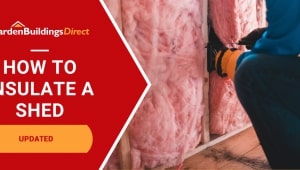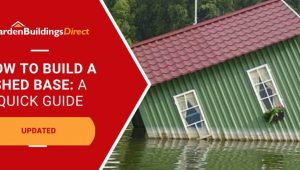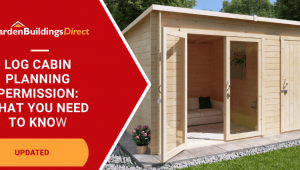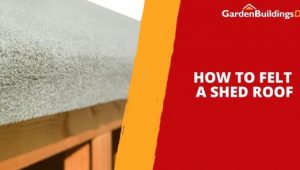Jump to:
Is your storage building no longer fit for purpose? It might be time to get rid of it. This guide to shed disposal will walk you through the best way to get rid of it, be it wood, metal, or plastic. Let’s get through them one by one, shall we?
How to Dispose of a Wooden Shed

Your shed needs to be dismantled first. Then all parts must be disposed of at a registered Household Waste Recycling Centre (HWRC), a.k.a. your local tip. You can take on the job yourself or hire a licensed man-and-van rubbish removal team to do it for you.
However, painted/treated wood is unlikely to be recyclable. It may have to go in the general waste or a bulky waste disposal.
Hiring a removal service, helps if the shed’s big, hard to reach, or you don’t have the time. Make sure they’re licensed and give you a waste transfer note. That way, you’re covered if anything gets dumped illegally. Here’s a government website where you can check your provider: Waste Carriers, Brokers and Dealers
How to Dispose of a Metal Shed
The same goes for wooden sheds; most councils likely won’t collect yours through regular bin day. Your best bet is to break it down and take the metal to a local scrap yard or recycling centre. Those made of steel or aluminium, in particular, are recyclable, so that’s one less thing to worry about.
But before doing that, check what parts are worth separating. Remove screws, bolts, and any non-metal elements like rubber seals or plastic trims. Most scrap yards pay by weight. The cleaner the metal, the better.
A safety reminder is to wear gloves, take time, and avoid forcing panels if stuck. You don’t want to risk injury. Once it’s all broken down, ring ahead to your local scrap yard or HWRC to check what they take.
How to Dispose of a Plastic Shed
Polyethene (PE) is recyclable, especially the high-density variant or HDPE. They’re widely accepted at many HWRCs, too. Meanwhile, polyvinyl chloride (PVC) can be different due to the chemicals it contains.
But rules vary, so check with your local recycling centre on items they process. Separate what you can before recycling to ensure the plastic parts are eligible.
What if your local HWRC won’t take the plastic parts? The next best option is a private recycling company or waste removal service (if possible). This is more convenient since they handle the sorting for you.
After Shed Disposal To-Dos
One thing many people forget is the ground underneath. Once the shed is gone, you may need to level it out or clear any leftover debris to get the space back to usable condition.
Tidy it up before repurposing the space. You might find weeds or damp patches underneath if the shed has been there for years.
Finally, decide what you’ll use the space for. It’s easier to plan while the ground is clear. Whether you’re laying new turf, adding a patio, or replacing the shed.
Need to buy a replacement shed?
Speaking of replacement, might as well browse our range of garden sheds for options while you’re here. We have timber options as well as galvanised metal and heavy-duty plastic sheds.
Compare the many options available and find the answers to many shed questions in our guide to buying a shed.





